Rick Cassidy, the chairman of Taiwan Semiconductor Manufacturing Co's (TSMC, 台積電) US subsidiary, TSMC Arizona Corp, plans to retire, but the company has yet to name a successor.
After Cassidy made his intention to retire known, TSMC Arizona held a special general meeting and approved a resolution that Cassidy would not continue as chairman and would not remain as a director, TSMC said in a statement filed with the Taiwan Stock Exchange last night.
The meeting also approved a plan to appoint TSMC Arizona president Rose Castanares as a director, the company said, adding that Cassidy has been named as an advisor to TSMC Arizona.
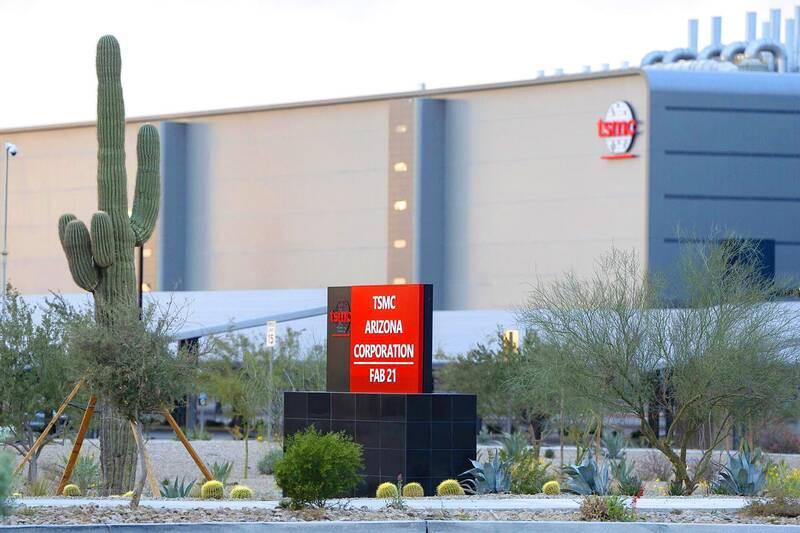
Photo: Bloomberg
Cassidy joined TSMC's subsidiary in North America in 1997 as a vice president for customer management and was promoted to be the subsidiary's president and chief executive officer in 2005, the world's largest contract chipmaker said.
Cassidy was named TSMC's vice president in 2008, supervising the chipmaker's business in the North American market, and then took the title of TSMC senior vice president, TSMC said.
He served as TSMC Arizona president from December 2020 to April 2023, before becoming chairman of the board in April 2023, it said.
During his 27 years at TSMC, Cassidy was dedicated to providing the best service to the company's clients and won their trust, and he made a significant contribution to the fabless IC design model and to the company's growth, TSMC said.
TSMC held a board meeting in Arizona in mid-February, marking the first time that the company held such a meeting in the US in its 37-year history.
The chipmaker is investing US$65 billion in Arizona to build three advanced wafer fabs. The first one began mass production last year, using the 4-nanometer process, and construction of the second is nearly completed, with the installation of equipment under way. TSMC broke ground on the third fab in late April.
In early March, TSMC pledged to invest an additional US$100 million over the next few years to build three more wafer fabs, two IC packaging plants and one research and development center in Arizona at around the time US President Donald Trump threatened to impose a tariff on semiconductors.
With the Trump administration continuing to threaten tariffs despite TSMC's US$100 billion olive branch, the company hit back in May, saying that any future tariffs on Taiwanese semiconductors could reduce demand for chips and derail its pledge to increase its investment in Arizona.
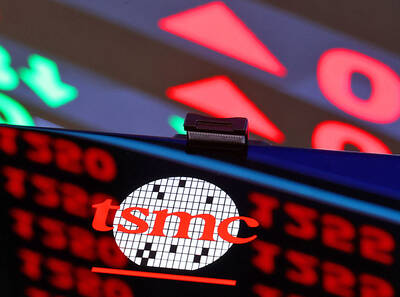
SEMICONDUCTOR SERVICES: A company executive said that Taiwanese firms must think about how to participate in global supply chains and lift their competitiveness Taiwan Semiconductor Manufacturing Co (TSMC, 台積電) yesterday said it expects to launch its first multifunctional service center in Pingtung County in the middle of 2027, in a bid to foster a resilient high-tech facility construction ecosystem. TSMC broached the idea of creating a center two or three years ago when it started building new manufacturing capacity in the US and Japan, the company said. The center, dubbed an “ecosystem park,” would assist local manufacturing facility construction partners to upgrade their capabilities and secure more deals from other global chipmakers such as Intel Corp, Micron Technology Inc and Infineon Technologies AG, TSMC said. It
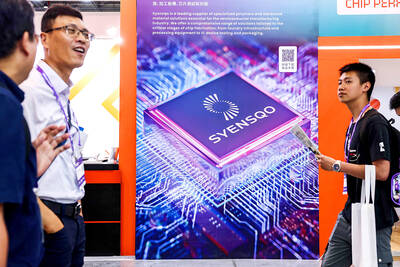
People walk past advertising for a Syensqo chip at the Semicon Taiwan exhibition in Taipei yesterday.
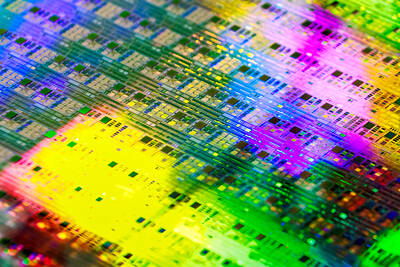
NO BREAKTHROUGH? More substantial ‘deliverables,’ such as tariff reductions, would likely be saved for a meeting between Trump and Xi later this year, a trade expert said China launched two probes targeting the US semiconductor sector on Saturday ahead of talks between the two nations in Spain this week on trade, national security and the ownership of social media platform TikTok. China’s Ministry of Commerce announced an anti-dumping investigation into certain analog integrated circuits (ICs) imported from the US. The investigation is to target some commodity interface ICs and gate driver ICs, which are commonly made by US companies such as Texas Instruments Inc and ON Semiconductor Corp. The ministry also announced an anti-discrimination probe into US measures against China’s chip sector. US measures such as export curbs and tariffs
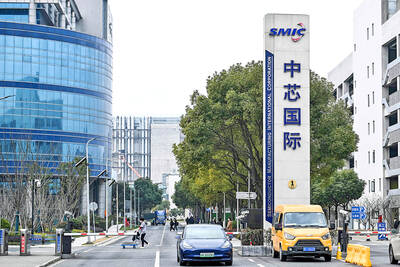
The US on Friday penalized two Chinese firms that acquired US chipmaking equipment for China’s top chipmaker, Semiconductor Manufacturing International Corp (SMIC, 中芯國際), including them among 32 entities that were added to the US Department of Commerce’s restricted trade list, a US government posting showed. Twenty-three of the 32 are in China. GMC Semiconductor Technology (Wuxi) Co (吉姆西半導體科技) and Jicun Semiconductor Technology (Shanghai) Co (吉存半導體科技) were placed on the list, formally known as the Entity List, for acquiring equipment for SMIC Northern Integrated Circuit Manufacturing (Beijing) Corp (中芯北方積體電路) and Semiconductor Manufacturing International (Beijing) Corp (中芯北京), the US Federal Register posting said. The